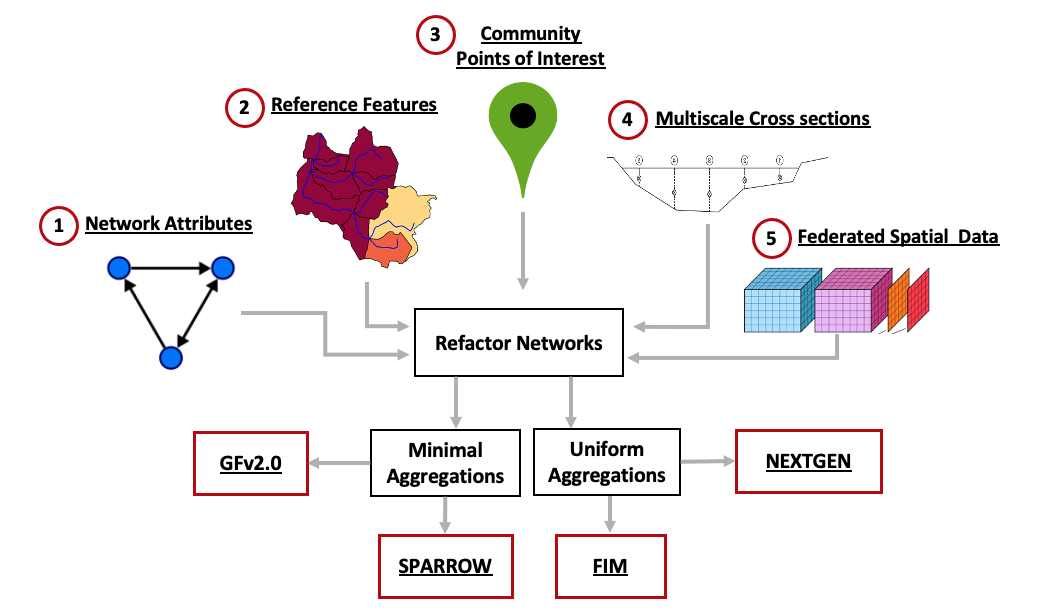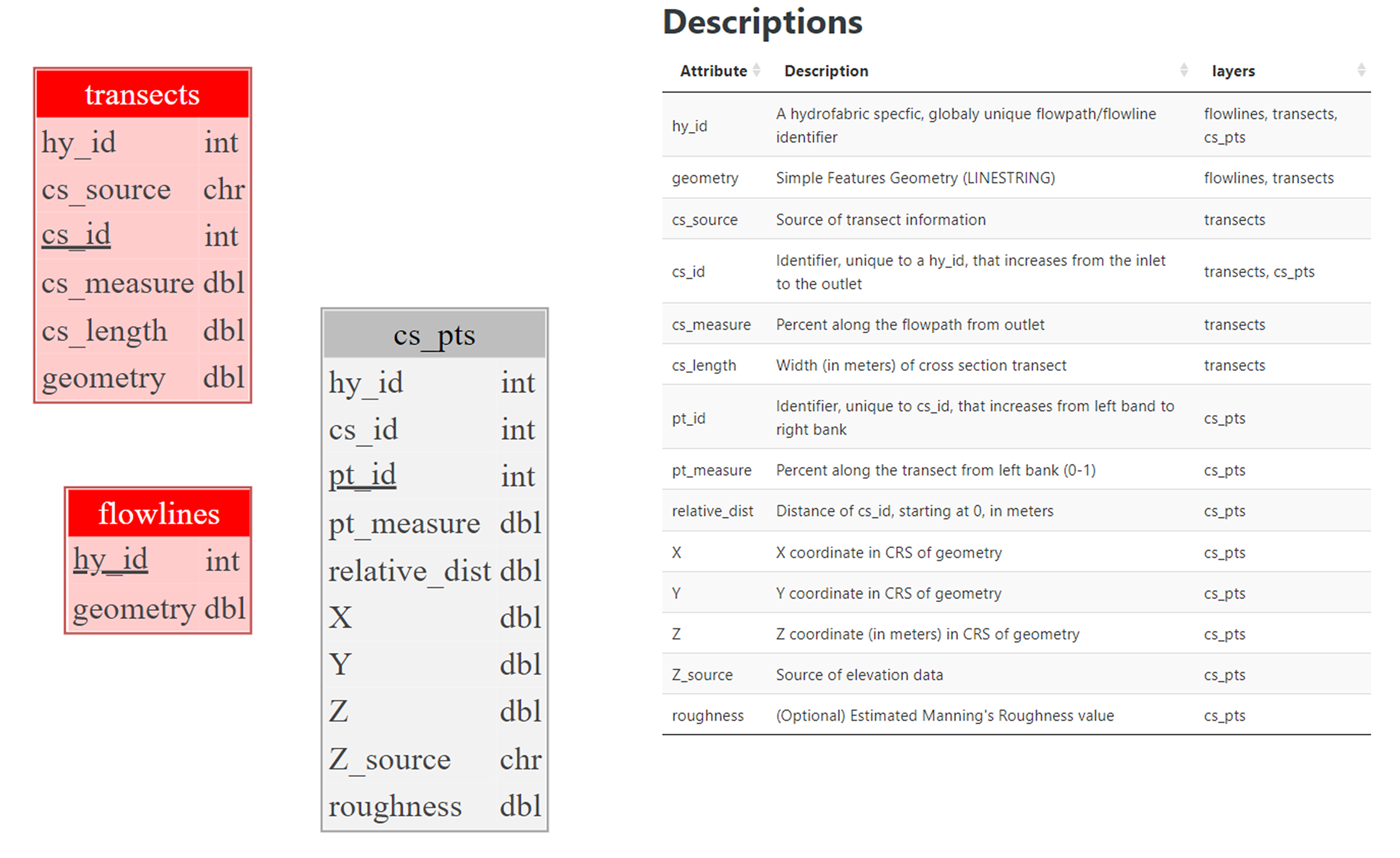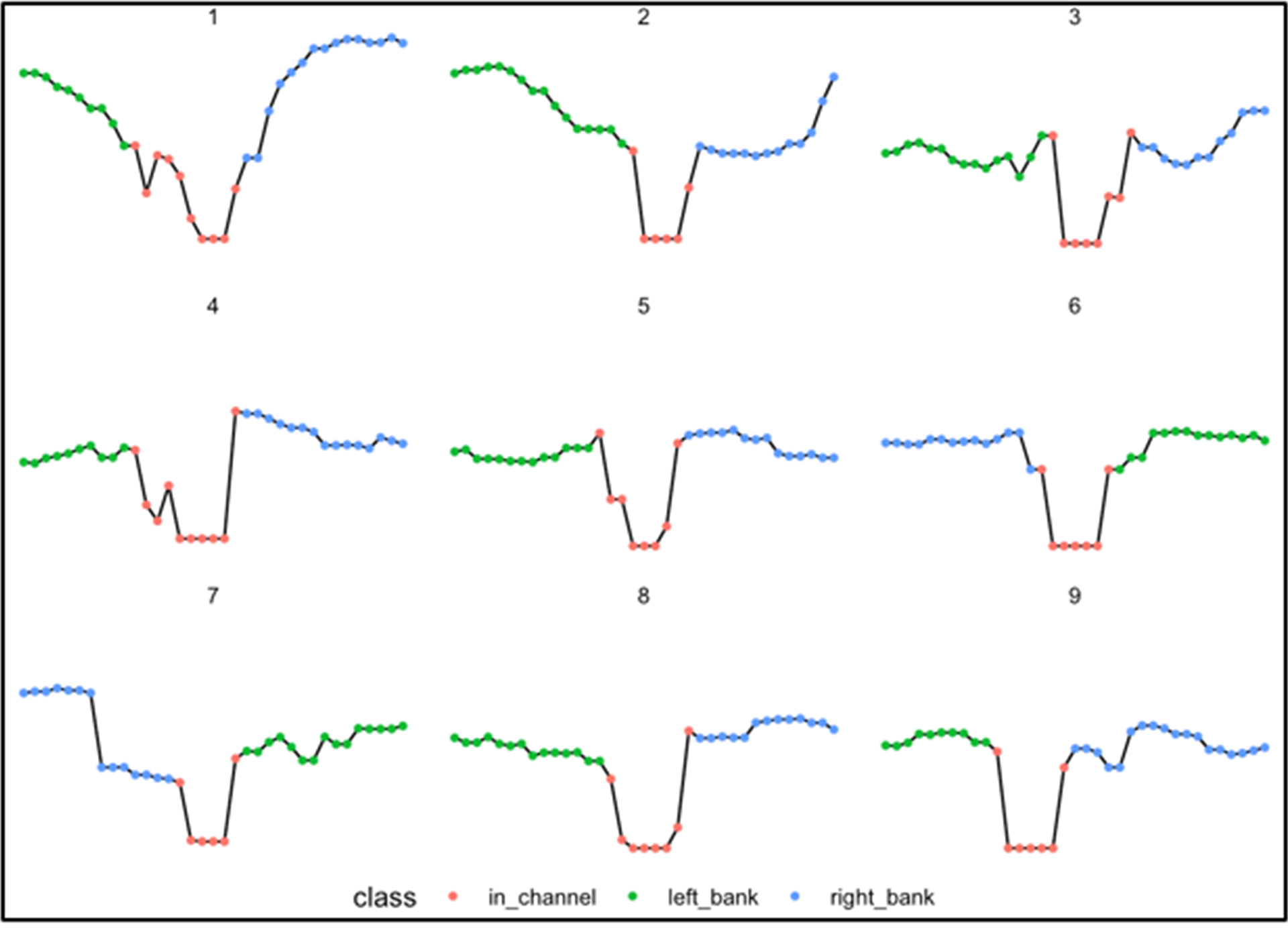The goal of hydrofabric3D is to generate DEM-based cross sections for hydrographic networks.
Installation
You can install the development version of hydrofabric3D from GitHub with:
# install.packages("devtools")
devtools::install_github("mikejohnson51/hydrofabric3D")Overview
This project provides the general tooling needed to create a flexible river channel data product based for the Reference Hydrofabric that supports the modeling needs of NOAA and USGS. It is comprised of multiple modules that together form a clear picture of hydrofabric:

This package focuses on the fourth element, “multiscale cross sections” that can be integrated from a variety of sources:
- Development of an automated tools to generate cross sections from a DEM (this package)
- Access to machine learning models that predict river channel depth, width, and shape (see channel-shape-ML repo
- Integration of channel cross sections from HEC-RAS (RRASSLER and eHydro (eHydRo)
- Estimates of channel width from multi-source data (e.g. remote sensing and OpenStreetMaps)
The interoprability between these is empowered by a shared data model shown below that is in line with the hydrofabric data model at large.

visit this website for more updates.
Base line cross section generation
One of the core utilities of this package is to generate DEM-based cross-sections (flood plains) for hydrographic networks. An example of how these cross-sections look is shown below and a full description is available at hydrofabric3D
 In addition to generation, the package can classify the cross section into left, right banks and in-channel as shown below. The problem is the flat line on the bottom of these plots, which represents the water level when this data was collected and nothing about the conditions at the time of collection (flood, dry year, etc.)
In addition to generation, the package can classify the cross section into left, right banks and in-channel as shown below. The problem is the flat line on the bottom of these plots, which represents the water level when this data was collected and nothing about the conditions at the time of collection (flood, dry year, etc.)

Getting involved
This project is in active development and all contributions are welcome. To get started a list of contact information is outlined below loosely by area of focus. Feel free to reach out to any and all: Mike Johnson (mike.johnson@noaa.gov) hydrofabric development and data models.
Angus Watters (angus.watters@noaa.gov) cross section generation.
Dami Eyelade (dami.eyelade@noaa.gov) integration of satellite derived products.
Arash Modaresi Rad (arash.rad@noaa.gov) development of machine learning models.